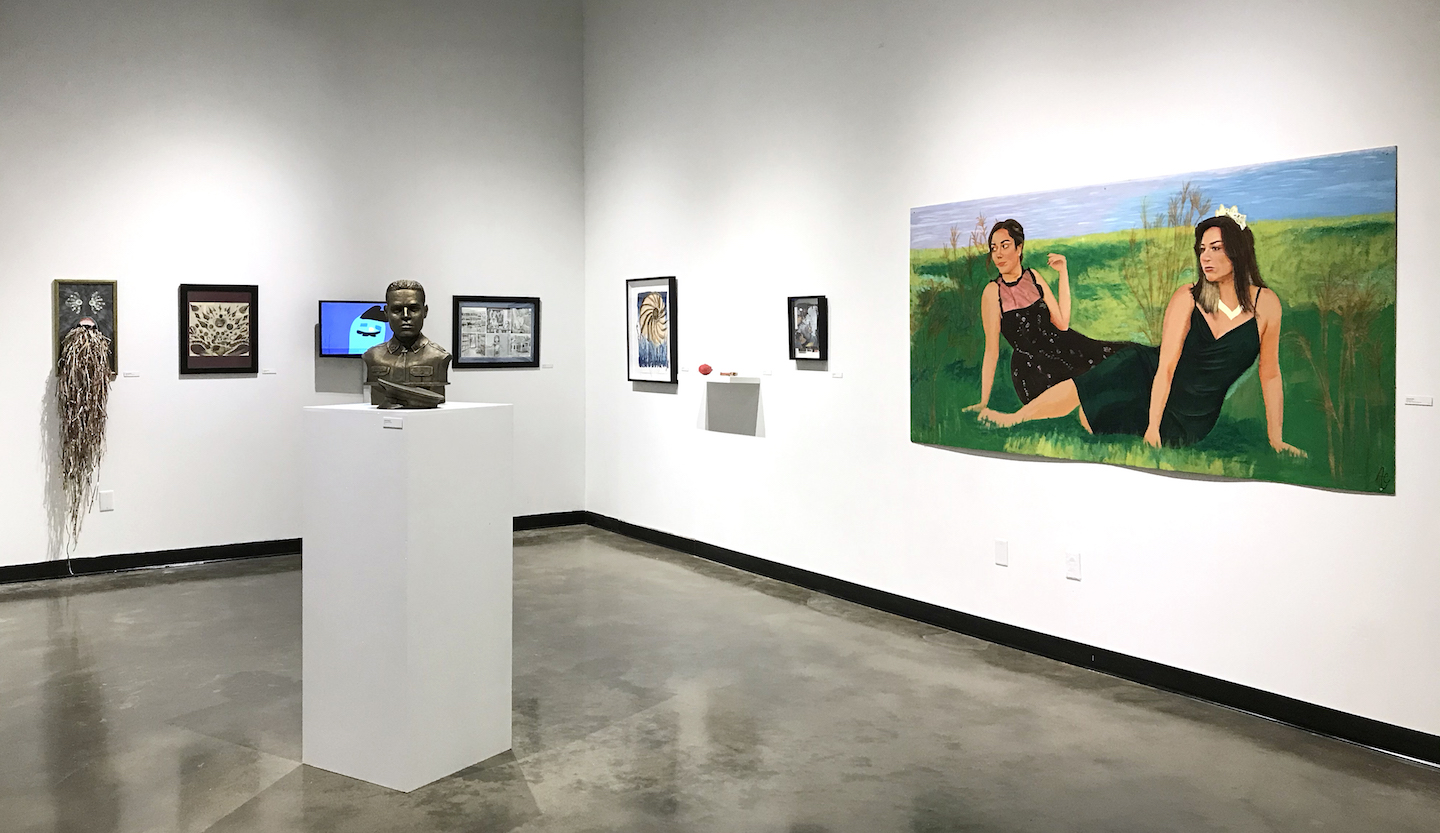An eye for art: Binghamton students jury Tennessee exhibit

Before the doors of an exhibition open, before the artwork hangs on a wall or stands on a pedestal, decisions must be made — professionally and impartially.
In juried exhibits, each piece of artwork comes before a panel of evaluators who decide whether it’s the right fit for the show. Recently, interns from the Binghamton University Art Museum (BUAM) joined Claire Kovacs, curator of collections and exhibitions, in jurying an art exhibit at Austin Peay State University (APSU).
APSU’s director of The New Gallery, Michael Dickins, reached out to Kovacs to see if she and Binghamton students would be interested in jurying their annual student exhibition. Kovacs accepted, and five current and former interns joined her in the process: Morgan Moseley, Stephen McKee, Clementine Sherman, Maranda Seebarran and Alex Ritsatos.
“The two of us collaborated on how to create a process that was not just a professional experience for the APSU students, but would provide an in-depth learning opportunity for the Binghamton students,” said Kovacs, who frequently curates exhibitions at other institutions. “It is, to the best of my knowledge, the first time that students have participated in such an experience.”
The 53rd annual exhibition at the Tennessee university runs through April 28 and showcases the work of that school’s art and design students. The jurying process was blind, which means that the artists’ names, academic ranks and majors were unknown to the judges, who saw only the image, size and medium of each artwork. It was conducted entirely online.
Sherman, a junior anthropology major with minors in art history and global studies, appreciated the opportunity to apply the skills she learned in the classroom and her internship.
“I was able to think critically about art in a brand-new way,” she said.
The software the jury used for rating displayed the artwork randomly, which ensured that their eyes weren’t fatigued by the time they reached a student’s work. They held discussions and three rounds of voting on Zoom to select which works would join the exhibition.
To successfully curate an exhibit, it’s important to get a sense of the scope of the participating artists: for example, are they established or emerging artists? For student artists, Kovacs focuses on encouraging work in which she sees promise. She encouraged her student jurors to consider these factors, too, in their process.
The highest-rated works were automatically included in the exhibition while they discussed others, making their individual case as to why they should be included.
“We all brought different perspectives and levels of expertise when it came to viewing the artworks. I, as an artist, paid particular attention to the technical ability displayed in each piece,” said McKee, a senior studying art history and painting who has entered art into shows himself. “It was fascinating to see how each piece spoke to our current moment in different ways, and those that had something unique and new to say definitely captured my attention.”
They tried to maintain a balance of different media, while maintaining a high standard of quality. McKee acknowledged that he is partial to painting and not a photography fan. Having other jurors keep the process fair was to everyone’s benefit, he said.
Kovacs was impressed with how seriously the Binghamton students took the jury process and the thought they put into it, she said.
“I appreciate the candor by which they spoke about the work, advocating for works that they felt strongly about, even pushing back against me at times,” she said. “I admire the respect that they held for each other, and their commitment to a rigorous, consensus-driven process.”
The group did disagree on several pieces of artwork, but the process was congenial and focused on sharing their perspectives, said Moseley, a senior anthropology major who is minoring in genocide and mass atrocity prevention.
“It taught me different ways to look at works of art, and how important different points of views are,” Moseley said. “This has been a crazy semester/year, and it was nice to step away from my classes and look at what other students at a different university are creating during this crazy time.”
